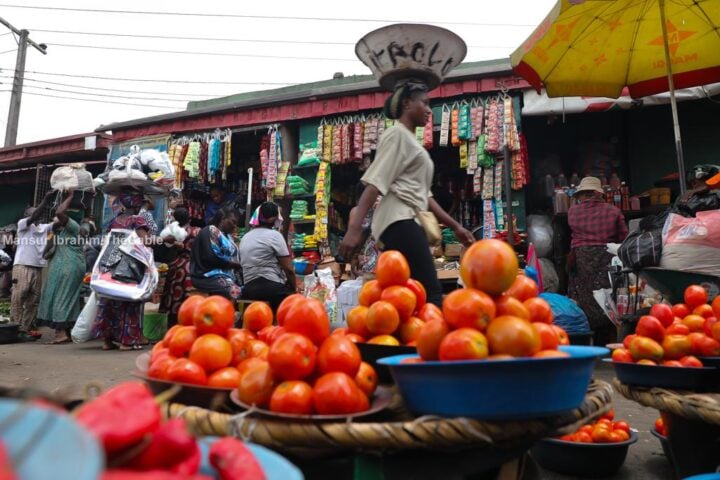In April 2023, the National Bureau of Statistics (NBS) spoke of its intentions to adopt a new methodology that conforms to recent International Labour Organisation (ILO) guidelines for computing labour force statistics.
NBS had said the new methodology would reveal a sharp drop in Nigeria’s unemployment rate.
On Thursday, the bureau launched its labour report, titled, ‘Nigeria Labour Force Survey (NLFS) for Q4 2022 and Q1 2023’.
The report said Nigeria’s unemployment rate plunged to 4.1 percent in the first quarter (Q1) of 2023, from 33.3 percent in 2020 — due to a change in methodology.
Advertisement
The underemployment rate, defined by NBS as a share of employed people working less than 40 hours per week and declaring themselves willing and available to work more, moved from 13.7 percent (Q4 2022) and 12.2 percent (Q1 2023) in three months.
The agency explained that the expansion of the definition of employment to include those working less than an hour per week, instead of the previous requirement of 20 hours per week, provides a clearer picture of the true extent of Nigeria’s underemployment crisis.
This is because it now includes people who are working in low-paying, insecure jobs, or who are working in jobs that do not utilise their skills and abilities, the NBS said.
Advertisement
Here are some highlights from the publication.
UNEMPLOYMENT RATE DECLINED BASED ON NEW METHODOLOGY
For the layman, it would seem like Nigeria’s unemployment rate fell by 29 percent in three years, relative to the figure announced in 2020. But that is not entirely true.
Using a new methodology, the NBS said the latest data aligns with the rates in other developing countries where work, “even if only for a few hours and in low-productivity jobs”, is essential to making ends meet, particularly in the absence of any social protection for the unemployed.
Advertisement
THE INFORMAL SECTOR ACCOUNTS FOR MORE JOB CREATION IN NIGERIA
According to the NBS, the informal sector in Nigeria, which is made up of businesses that operate outside of government regulation and are largely unregistered, stood at 92.3 percent of the labour force in Q1 2023.
This gives credence to experts’ argument that Nigeria’s economy is largely driven by the informal sector.
The informal sector includes commercial bus drivers, artisans such as dressmakers, hairdressers, vulcanisers etc., and mainly those in the low socio-economic strata, with low skills and poor education.
Advertisement
The bureau said informal employment among the employed Nigerians was 93.5 percent in Q4 2022 but went down to 92.6 percent in Q1 this year.
“In Q4 2022, 93.5% of employed Nigerians were engaged in informal employment including agriculture, while 90.9% in informal employment excluding agriculture,” the report reads.
Advertisement
“Similarly, in Q1 2023, 92.6% of employed persons were in informal employment which includes agriculture, while 89.4% in informal employment which excludes agriculture.
“This shows a significantly high rate of informality in the country, which is a common phenomenon in most countries in West and Sub-Saharan Africa.”
Advertisement
THE MAJORITY OF NIGERIANS ARE SELF-EMPLOYED
Although Nigeria is often described as an oil and gas-based economy, the NBS data suggests that the country’s economy is primarily supported by micro, small, and medium-sized enterprises (MSMEs), particularly nano and kiosk businesses.
Advertisement
According to the report, 73.1 percent and 75.4 percent of employed Nigerians in Q4 2022 and Q1 2023 respectively, worked in their own businesses or were engaged in farming activities as their primary jobs.
In contrast, only a small percentage of employed Nigerians were wage earners in their primary jobs, with 13.4 percent in Q4 2022 and 11.8 percent in Q1 2023.
“A further 10.7% (in Q4 2022) and 10.5% (in Q1 2023) of employed Nigerians were primarily engaged in helping in a household business, receiving pay or profit indirectly even if it was not their own business,” the report reads.
“A small proportion of employed Nigerians were primarily engaged as apprentices or interns (2.6% in Q4 2022 and 2.2% in Q1 2023). Those helping a household member who worked for someone else was about 0.2% in both Q4 2022 and Q1 2023.”
WORKING AGE NOW 15 YEARS AND ABOVE
The NBS also said in the previous methodology, the working-age population was defined as persons aged 15 to 64.
This indicator, the agency said, measures the share of the working-age population in the total population. However, the revised methodology adopted in the latest labour force report changed the working age to 15 years and above.
The report did not stipulate any retirement age.
SOME NIGERIANS ARE OUTSIDE THE LABOUR FORCE
NBS said the labour force covers those who are either employed or unemployed.
This means that some Nigerians are outside the labour force but are in the potential labour force.
“Some people are not employed but they are either searching for paid work but not available to work or they are available to work but they are not searching; this is the potential labour force population,” the bureau explained.
“The share of working-age Nigerians who were out of labour force but in the potential labour force was 3.7% in Q4 2022 and 2.3% in Q1 2023.”
INCREASED WOMEN-OWNED BUSINESSES
The NBS report also showed that employed men were more likely to engage primarily in wage jobs than employed women.
The survey defined primary job as the job an individual spends the most time doing.
TheCable Index analysis of the data shows that the share of employed men who worked in their own businesses or in agriculture was 73.1 percent in Q4 2022, while the value for women stood at 76.9 percent.
It was also observed that women who worked in their own businesses or agriculture increased to 78.7 percent in Q1 2023, but the number for men declined slightly to 72.1 percent.
Going by the data, it means that (in percentage terms) there are more businesses run by women in Nigeria.
Add a comment







